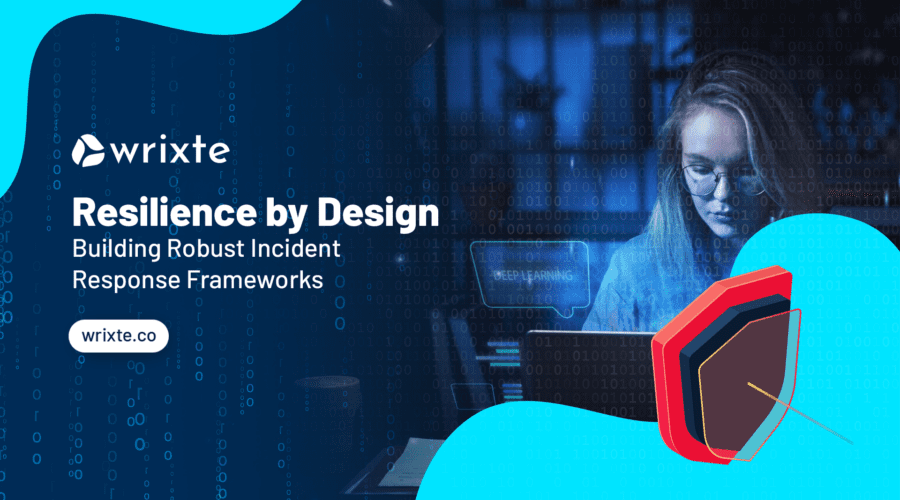In today’s digital age, cybersecurity threats are not just growing in number but are becoming more sophisticated. For niche markets, from healthcare and finance to emerging technologies like blockchain and IoT, the challenge is not just about defending against these threats but doing so in a way that understands the unique operational and regulatory landscape of each sector. This calls for resilience by design—building robust incident response frameworks that are tailored to the specific needs and challenges of these markets.
The Unique Cybersecurity Challenges of Niche Markets
Niche markets face unique cybersecurity challenges that demand specialized solutions. For example, the healthcare industry not only grapples with the protection of sensitive patient data but also needs to ensure the availability of critical systems. A breach in this sector isn’t just a data privacy issue; it can be a matter of life and death.
Similarly, the finance sector is a prime target for cybercriminals due to the vast amounts of monetary transactions and sensitive financial information. The challenge here extends beyond theft, as the integrity and availability of financial services are crucial to global economic stability.
Emerging technologies, like blockchain and IoT, while promising to revolutionize various sectors, introduce new vulnerabilities. The decentralized nature of blockchain, for example, presents unique security challenges, whereas the proliferation of IoT devices expands the attack surface dramatically.
Tailored Incident Response Framework: Wrixte Advantage
To address these challenges, Wrixte’s approach to building incident response frameworks is grounded in customization and understanding the specific landscape of each niche market. Here’s how Wrixte is revolutionizing the approach:
1. Risk Assessment and Threat Modeling Specific to Niche Markets:
Wrixte begins with a comprehensive risk assessment that is not one-size-fits-all. For healthcare, this might involve assessing the risk to patient data and life-supporting hardware. In finance, the focus could be on transaction integrity and data confidentiality. By understanding the unique threats and vulnerabilities of each sector, We craft incident response strategies that are far more effective.
2. Regulatory Compliance Integration
Each industry comes with its own set of regulatory requirements. Wrixte’s incident response frameworks are designed not just to respond to incidents but to do so in a way that ensures compliance with industry-specific regulations. This dual focus on security and compliance is crucial for niche markets where regulatory compliance is a significant concern.
3. Customized Incident Response Playbooks
Wrixte develops tailored incident response playbooks for each client, taking into account their specific operational environment, threat landscape, and regulatory requirements. These playbooks include detailed response procedures for a range of scenarios, ensuring that the response is both swift and appropriate to the situation.
4. Advanced Technologies and Expertise
Leveraging the latest in AI and machine learning, Wrixte’s incident response frameworks are not just reactive but proactive. They can predict potential threats and automate certain response actions, allowing for quicker mitigation and less downtime. Wrixte’s team of cybersecurity experts brings years of experience in niche markets, ensuring that the strategies and technologies employed are cutting-edge and effective.
5. Continuous Improvement and Adaptation
The cybersecurity landscape is constantly evolving, and so are Wrixte’s incident response frameworks. Through continuous monitoring, analysis, and adaptation, Wrixte ensures that its clients are always prepared for the latest threats. This dynamic approach is particularly important for niche markets, where new technologies and business models can change the threat landscape rapidly.
Impact on Niche Markets
For niche markets, the benefits of a tailored incident response framework are substantial. In healthcare, it means better protection of patient data and systems, ultimately saving lives. In finance, it means securing transactions and maintaining the trust of customers. For emerging technologies like blockchain and IoT, it means navigating the new threats with confidence and ensuring the safe adoption of these technologies.
Conclusion
Building resilience by design is more than just a cybersecurity strategy; it’s a business imperative, especially for niche markets. Wrixte’s approach to creating robust incident response frameworks—tailored to the unique challenges of each sector—ensures that its clients are not just responding to incidents but are proactively preparing for them. This tailored approach is the cornerstone of cybersecurity resilience in the digital age, providing a blueprint for how organizations can protect themselves against an ever-evolving threat landscape.
By focusing on the unique needs of each client and leveraging advanced technologies and expertise, Wrixte is leading the way in transforming incident response from a reactive measure into a strategic advantage.
